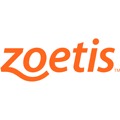 As you prepare to turn the calendar to 2014, the end of the year is a great time to review your protocols, records and finances to look for ways to improve your operation. Taking a closer look at your pre-weaning mortality rate could help you find ways to improve your bottom line.
As you prepare to turn the calendar to 2014, the end of the year is a great time to review your protocols, records and finances to look for ways to improve your operation. Taking a closer look at your pre-weaning mortality rate could help you find ways to improve your bottom line.
In the United States, the average pre-weaning mortality rate is 16.5%.1 By empowering farrowing room caregivers with the knowledge and training they need, you can ensure more piglets survive weaning and reach full value.

“In early pig care, following protocols is key to helping new pigs survive,” said Lucina Galina, DVM, PhD, Pork Technical Services, Zoetis. “Making sure caregivers understand why each task is necessary is just as important as helping them understand how to do the task. This training can be challenging if there is a language barrier.”
Dr. Galina teaches the whys of pig care to caregivers in farrowing rooms through the Zoetis service offering Day One Pig Care. She cultivates employee engagement through bilingual training that focuses on farrowing and piglet management to reduce pre-weaning mortality rates.
A Day One Pig Care session takes place on the farm with a classroom presentation and one-on-one mentoring in the farrowing room. In particular, the program helps Spanish-speaking caregivers understand the whys that often are not part of their training.
“When caregivers don’t understand why they are doing certain tasks in the farrowing room, they can become unengaged and make mistakes during this highly critical time,” Dr. Galina added.
During Day One Pig Care training, Dr. Galina focuses on three key steps to help give piglets the best chance at survival.
- Farrowing assistance: A piglet should arrive approximately every 15 minutes during farrowing. Caregivers need to understand what is abnormal, how to identify at-risk sows and why it is important to quickly manage problems during farrowing progression.
- Warming pigs: New piglets can get cold quickly after birth. Caregivers need to dry the piglets and give them access to a heat source to help keep their body temperatures at a healthy level.
- Accessing colostrum: New piglets need colostrum to get nourishment and to boost their immune systems. Caregivers will need to check teat health of the sows and help piglets access colostrum in a timely fashion.
Day One Pig Care is derived from another Zoetis service, the training program Individual Pig Care — It’s the Right Thing to Do®, which helps caregivers identify illness in pigs sooner, allowing for a better chance at a successful treatment.
“Our customers were telling us that Individual Pig Care is a very useful program but they wanted a program more focused on sow farm management,” Dr. Galina said. “The farrowing room is a more complex environment to identify at-risk pigs. It’s important to manage sows and piglets better so more new pigs survive weaning and after.”
As you evaluate your plans and goals for 2014, consider how to fight shrinking margins by reducing pre-weaning mortality rates for healthier pigs and a healthier bottom line. For more information on Day One Pig Care, contact your local Zoetis representative.
December 4, 2013 - Zoetis


